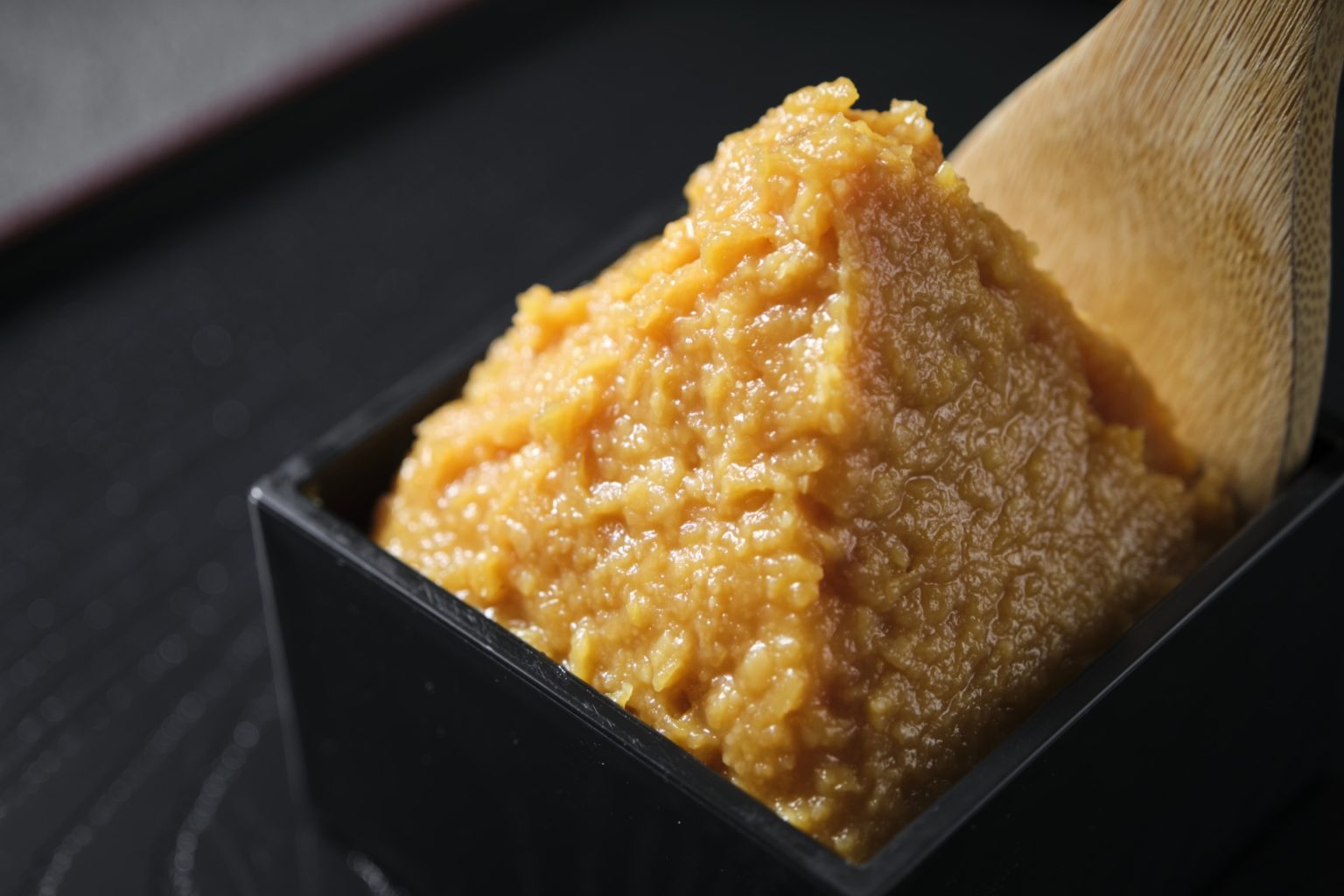Fermented Foods Bring a Wealth of Health to the U.S.

Fermented foods have been gaining popularity in the United States for some time now. In 2003, Sandor Ellix Katz, a leader in the fermentation movement and a self-described fermentation geek, published his first book on fermented foods, Basic Fermentation. Since then, he has written numerous books ranging from adventures in the world’s fermented food cultures to advanced, specialized cookbooks, one of which has been translated into Japanese: Sandor Katz’s Fermentation Journeys: Recipes, Techniques, and Traditions from around the World.
If one were to trace the history of fermented foods in the U.S., one would find The Book of Tofu at the beginning. Co-authors Akiko Aoyagi and her American husband William Shurtleff began their research on soy-based food in Japan in the fall of 1972 and published a book about it. This was followed by The Book of Miso by the same authors, published in 1981. The book is considered a landmark work that sparked the miso boom in the United States. An owner and chef of a long-established sushi restaurant in Manhattan once commented, “In the 1980s, many Americans resisted eating sashimi, sushi wrapped in black nori, and miso soup. But over time, Japanese food was accepted among many to become what it is today.” The current interest and demand for Japanese food, including fermented foods, have grown gradually over the past 40 years.
Next came the publication of The Noma Guide to Fermentation by The Noma Fermentation Lab in 2018. Copenhagen-based Noma, known by some as the best restaurant in the world, introduced fermented foods as a more creative and sophisticated culinary technique.
The covid pandemic triggered another wave of interest in fermentation. These days, fermented foods are evolving on their own in Japan and abroad respectively. Machiko Tateno, a Japanese culinary researcher, worked to connect the dots between the two countries. Tateno published books on miso, shio koji, amazake, and other fermented foods in Japan. She also made appearances on a cooking show that has been airing for more than 60 years. Her efforts to educate people about fermented foods as home cooking that anyone can prepare had already circulated in Japan, but have now also reached Portland and New York. The English edition of Japanese Pickled Vegetables, published in 2019, was so popular that it had to be reprinted. Her way of cooking, which pursues the simple and delicious, was appreciated beyond borders. At a lecture event on pickles held in New York a few years ago, Tateno said, “I realized the potential of fermented foods as I met people from Portland who enjoy fermented food with unique ideas that the Japanese people do not have, and I want to now spread amazake.”
The Fermentation Festival in Portland, which began in 2009, is one gateway to understanding the fermented food scene in Portland. Tateno attended the event twice with her friends, the Migakis, the owners of Jorinji Miso, who are known for making miso in Portland using traditional Japanese methods. The festival helped deepen her relationship with the residents, who loved fermented foods.
Founded in Portland 27 years ago, Jorinji Miso has been in business thanks to connections formed over time
Jorinji Miso was founded in 1995 by Earnest Migaki, a third-generation Japanese American born and raised in Portland, and his first wife, Sumiko, who was born in Japan. Earnest originally moved to Japan to find a job, where he met Sumiko. The couple returned to Portland in 1994. At the time, homemade miso was not available in Portland, so they decided to make miso that would meet their own standards. Using an instruction manual and tools brought from Japan, they went through several attempts, and the final miso was a success among their friends. This experience led to the birth of Jorinji Miso. Just as the miso was proving popular enough to be sold at local organic supermarkets, however, Sumiko suddenly passed away. Earnest was overwhelmed with a sense of loss and anxiety. But with the encouragement of his business friend Mio Asaka, who sold pastries using his miso at a local farmer’s market, Earnest waded through his loss and continued to make miso.
Yuri Oe, a Tokyo native, learned about Jorinji Miso through Mio in 2015 when she was studying abroad in Portland. She met Earnest and began helping him at his workplace. The following year, they married. Yuri Migaki recalls of her first encounter with Jorinji Miso, “It was a pleasant surprise to find such delicious miso in Portland.”

In their miso storeroom, a local newspaper clipping that featured the company when it was founded is taped to the wall. Yuri says, “There is a feeling that the three of us are working together, Sumiko-san watching over us so that we can make delicious miso.” After graduating from a junior college in Japan, Yuri worked as a system engineer for 20 years. Then she worked as a manager for Roppongi Nouen, a farm-to-table restaurant where Tateno worked as a chef. During her first 5 years at Jorinji Miso, Yuri redesigned the packaging, brand logo, and manufacturing space, also improving the environmental conditions of manufacturing. Of all the changes she made, changing the label, which had been used since the company was founded, was the biggest decision, as it was created by her predecessor. Yuri says with a smile, “I am having a very enjoyable time now.”
The miso-making and tasting demonstrations in Portland, and the recipes featured on the website, seem to be a culmination of all the experience and knowledge she has accumulated over the years. It’s not all about miso soup— she offers recipes that combine the miso with fusion-style dishes. One featured recipe is tortilla pizza with colorful vegetables and mushrooms with a miso mayonnaise sauce.
Making Miso in Portland with Japanese aesthetics and sensibilities
Since Jorinji Miso adheres to making raw miso, its distribution channels are naturally restricted. They sell their products through a limited number of supermarkets in the Portland area and their official website. The company does not distribute its products to large intermediary companies in bulk, instead relying on small local delivery companies or carrying out deliveries directly to minimize the time from order to purchase. To avoid waste as much as possible, Jorinji Miso does their best to fully pack the miso into containers after receiving each order.
They carefully remove mold from the surface of the miso barrels as they check the level of maturity. Through this process, they say that no matter how meticulous the preparation, there is an inevitable amount of loss which is always painful to see. They talk to their miso as it ferments, telling it to “become tasty,” as the bacteria are living creatures——it’s moving to see how they spare no efforts to make their miso.
The commitment is not only seen in the miso-making process, but also in the containers and labels. While miso sold in supermarkets primarily relies on plastic, for direct sales they use only glass jars and paper containers. The labels are easy to peel off, making it easy for buyers to reuse the glass containers. The uncompromising attention to detail, which one might not notice unless told, reflects sensibilities and characteristics of Japanese products.
When chefs from local restaurants ask them how to make miso, they generously teach how to do it. Yuri says, “I hope everyone will make miso. It would be fun if Portland became the next miso-making capital after Japan.” Yuri gladly shares her knowledge about authentic miso and fermented food culture. Koji from Jorinji Miso is also used in miso-making events at local schools and around the community. They have encountered many interesting and unique Portlanders, including some customers who enjoy miso dissolved in hot water, and others who find fermented foods “mystifying” and call Yuri and Earnest wizards. Indeed, the more one learns about the miso-making process, the more interesting and magical it becomes. Even if the same ingredients are used in the same place and same quantity, there are differences in the finished product depending on the producer. A Japanese miso craftsman once told me, “The bacteria choose the right person, and miso cannot be made unless the person making it has the right spirit.
In New York, people are already familiar with the unique Japanese taste: dashi, umami, and other flavors characteristic of the cuisine. It’s not all about sushi and ramen. Earnest, whose father is a second-generation Japanese American and mother is from Aomori, grew up with homemade miso soup and pickles. During his college days, when there were far fewer Japanese restaurants or places stocking Japanese ingredients than there are now, he grew sick of the dry pizzas and hamburgers at hand. When he moved to Yokohama for work at the age of 25 and came across gyudon, yakitori, soba stalls, and Japanese sweets, he realized that the Japanese food he had been eating in Portland was very limited. When asked about the current awareness of Japanese food and miso in Portland, he replied, “There is a mix of authentic American fermented foods and Japanese food. Consumer tastes are changing in line with diverse food cultures, such as gluten-free and vegan, but things have calmed down a bit now. We wonder what the next trend will be, but all we can do is continue to produce miso that we are satisfied with.”
Jorinji Miso
Soy Beam Jozo’s miso brand is run by Earnest Migaki, a third-generation Japanese American born and raised in Portland, Oregon, and Yuri Migaki, a Japanese native who moved to Portland in 2015. They focus on natural fermentation and small-batch production. In addition to wholesaling to supermarkets and restaurants in the Portland area, they conduct direct sales through monthly events, as well as shipping directly within the U.S., except during summer months. The duo believes that miso is a way to make people healthy and happy.
Originally published at https://tokion.jp on December 5, 2022.







 Instagram
Instagram